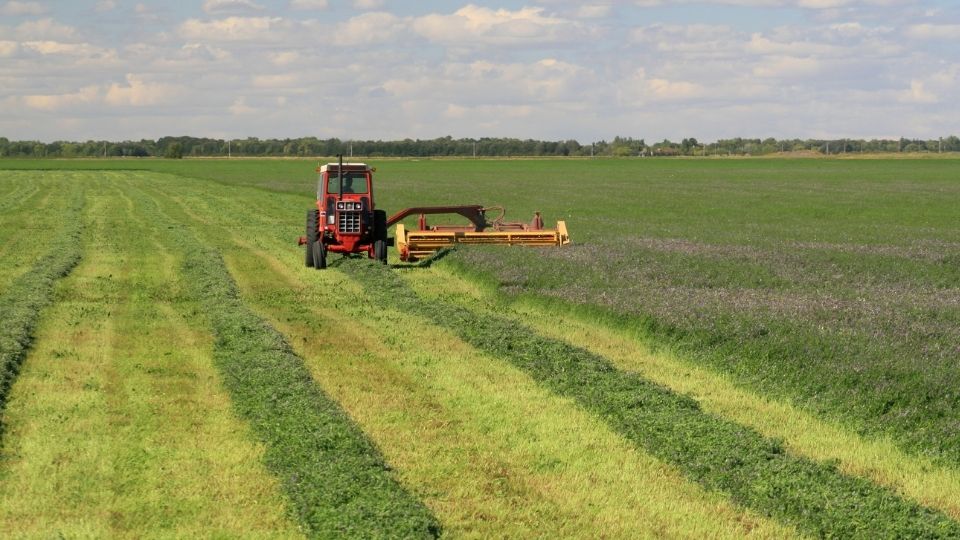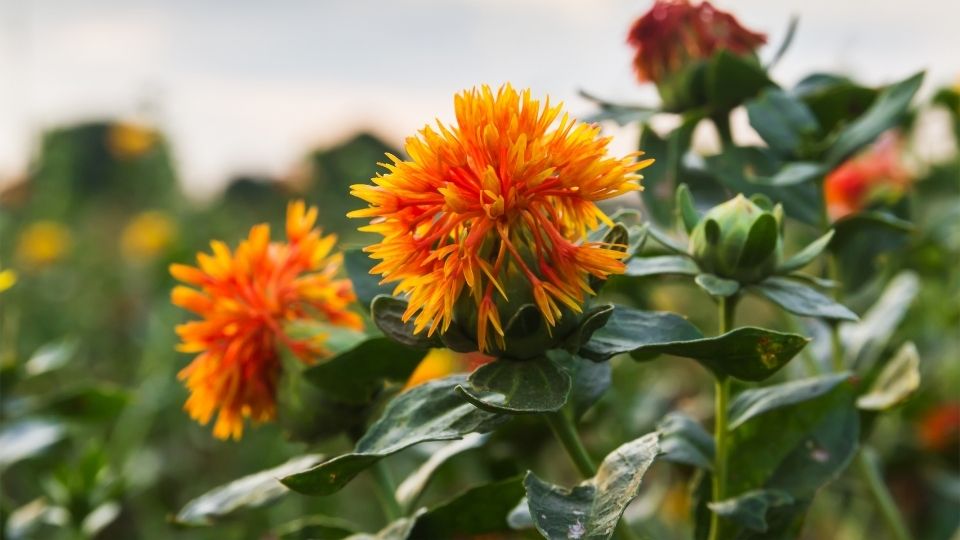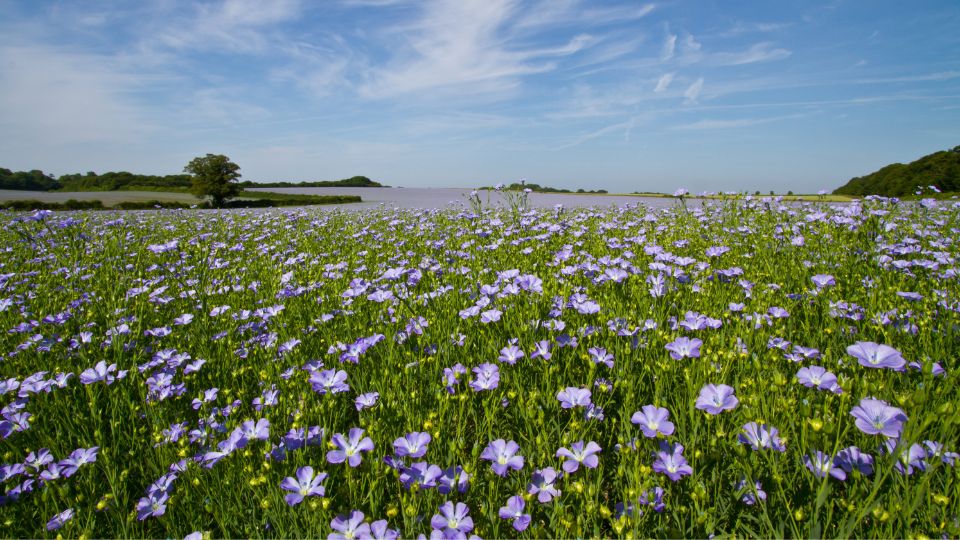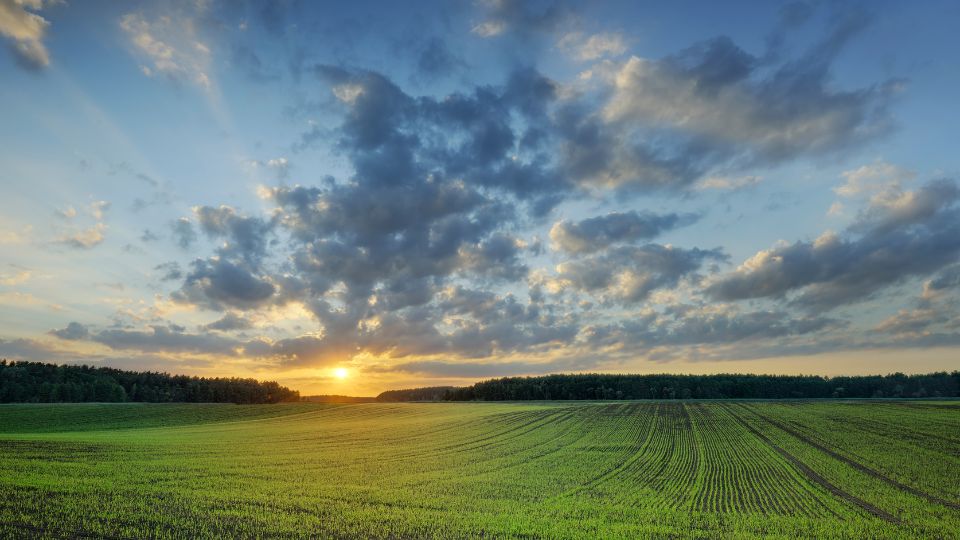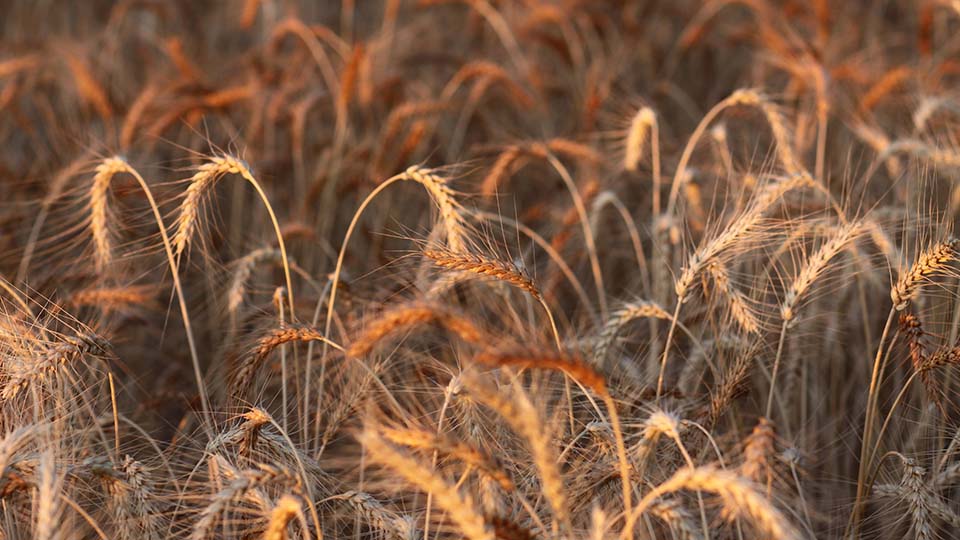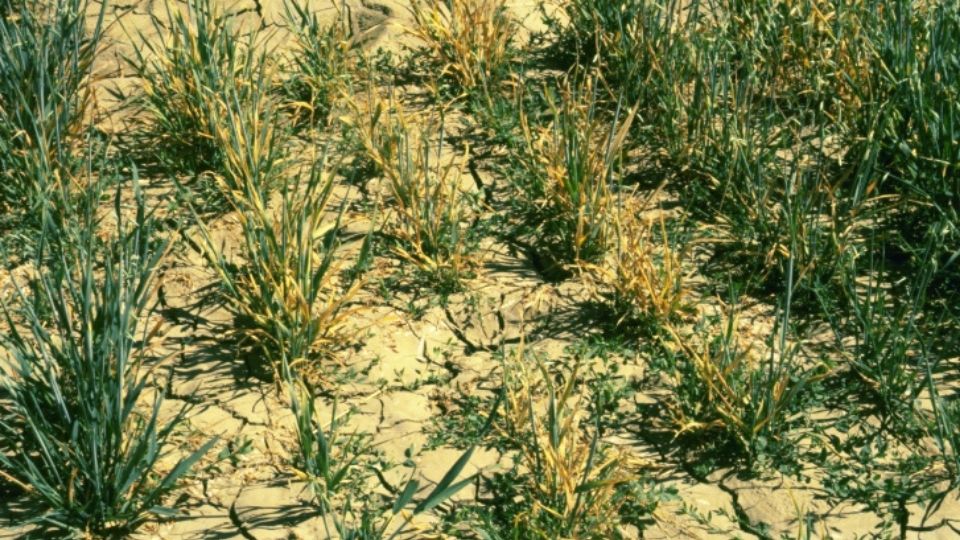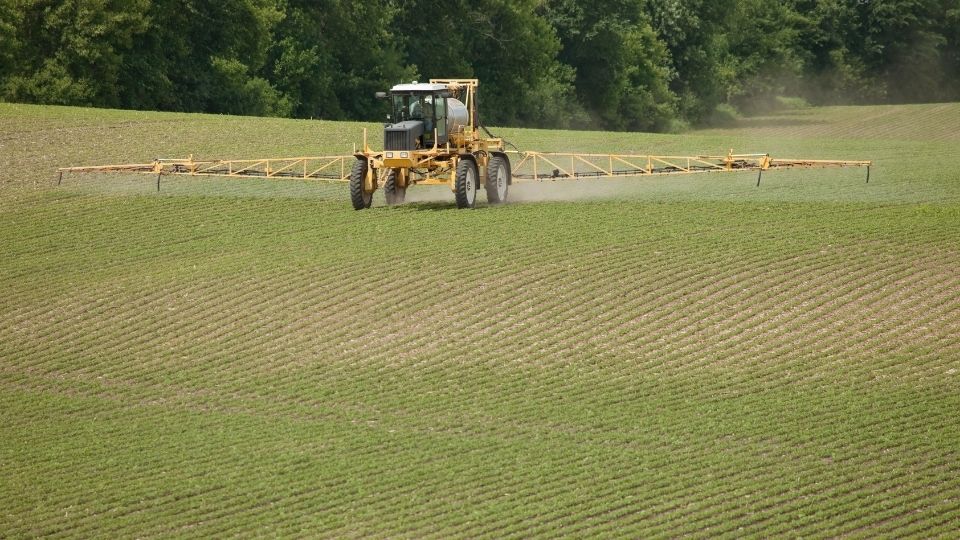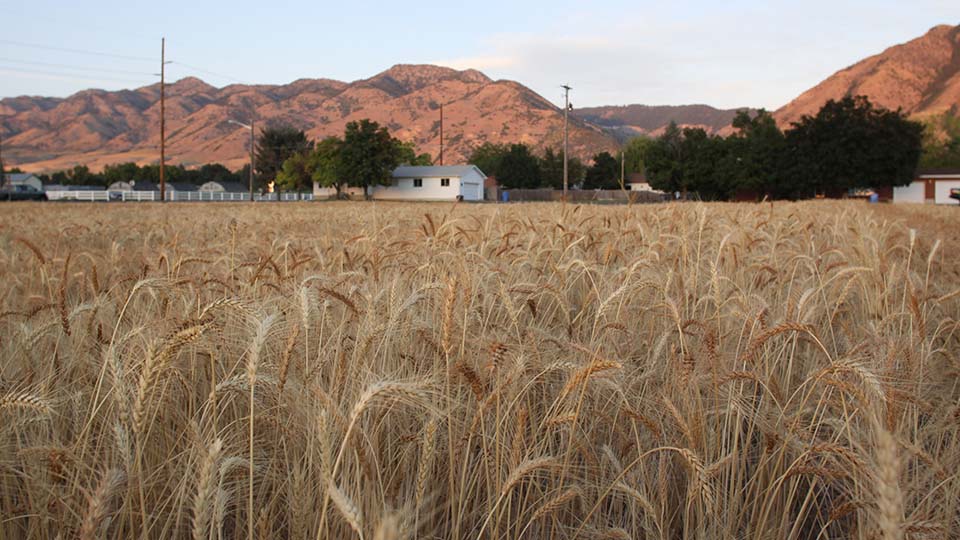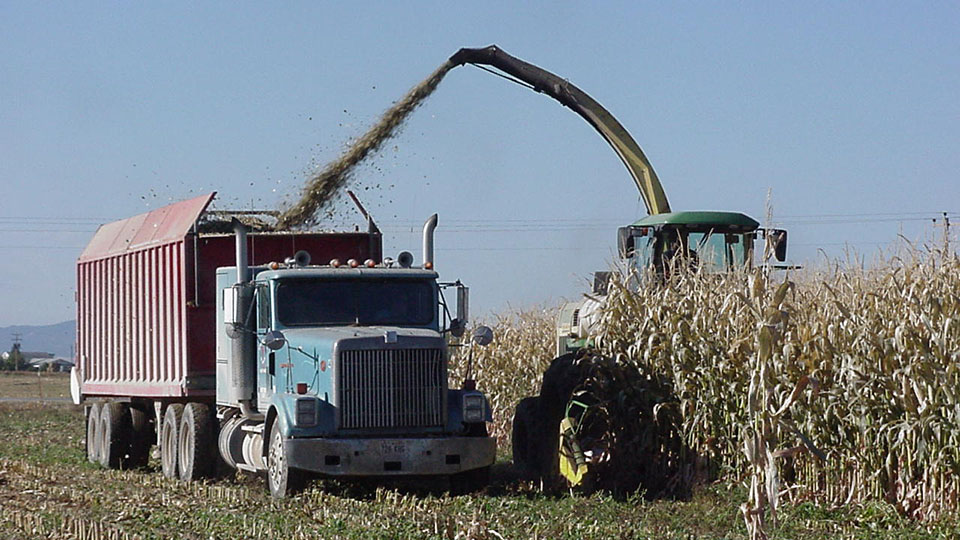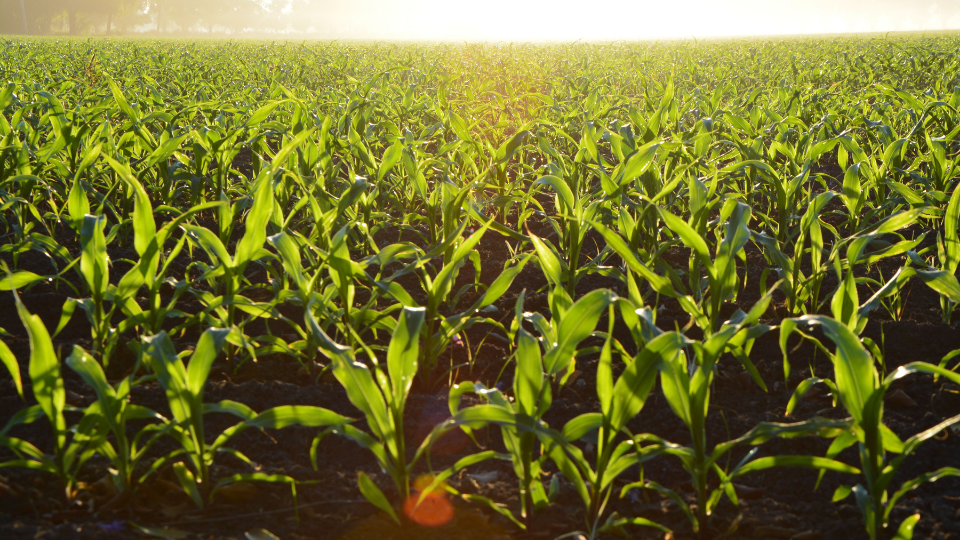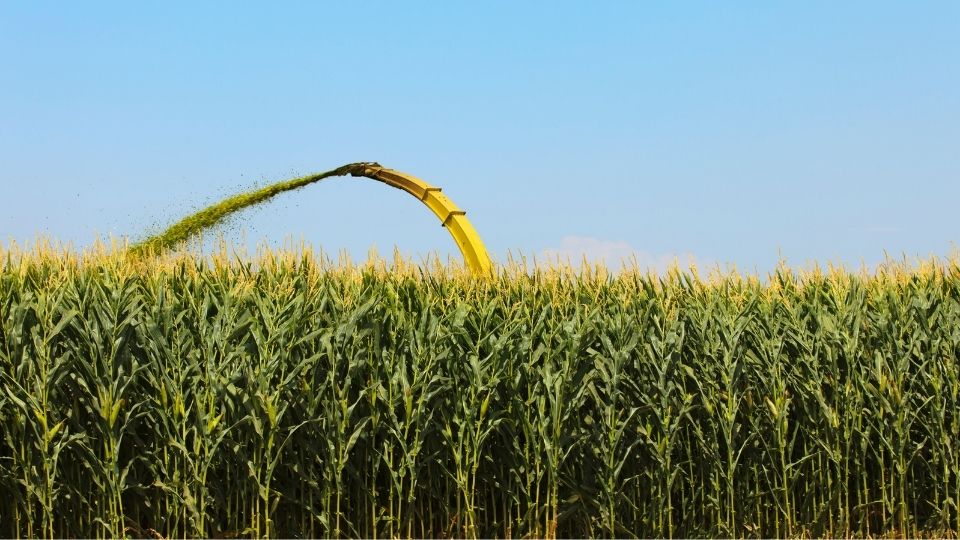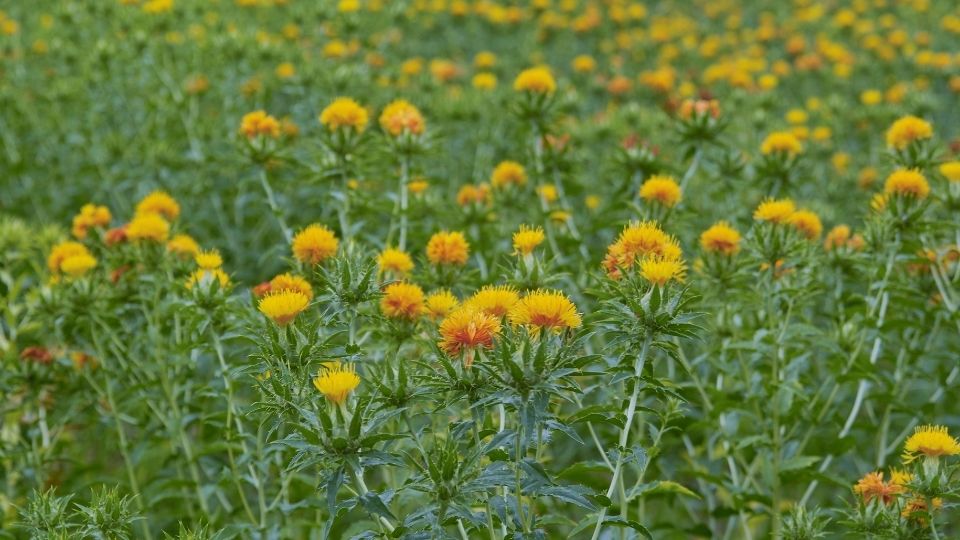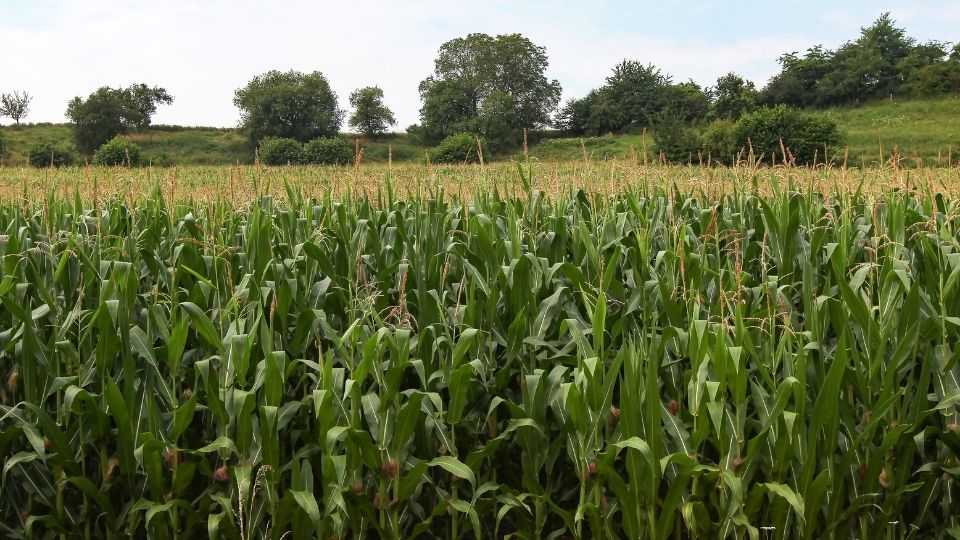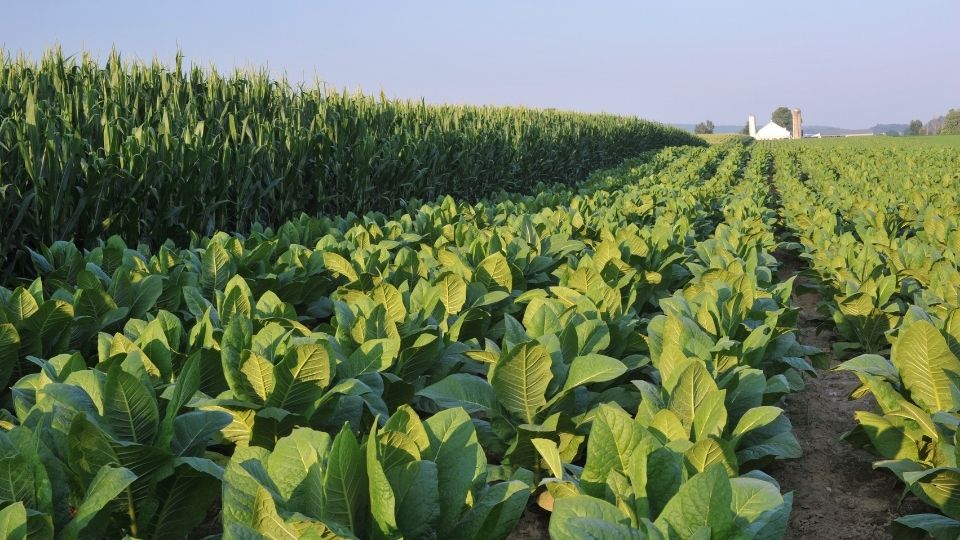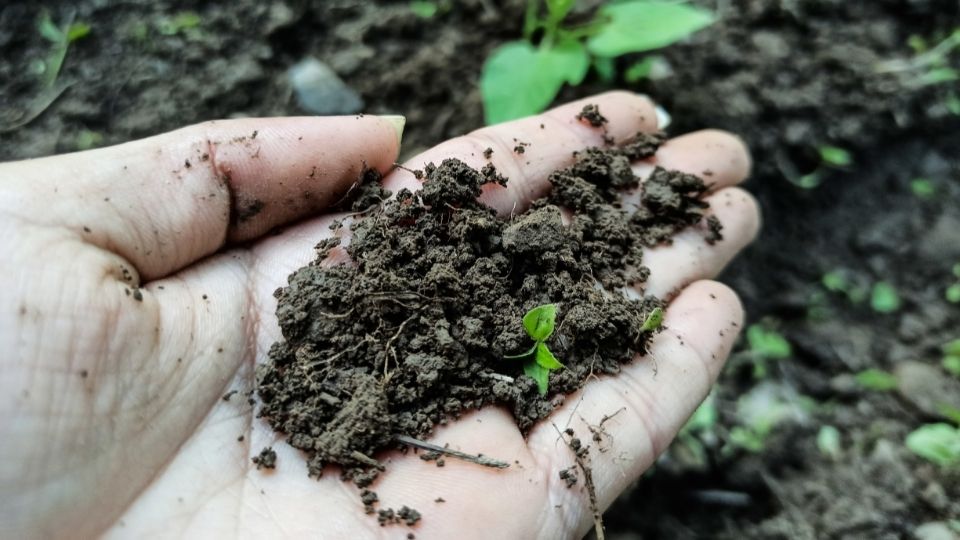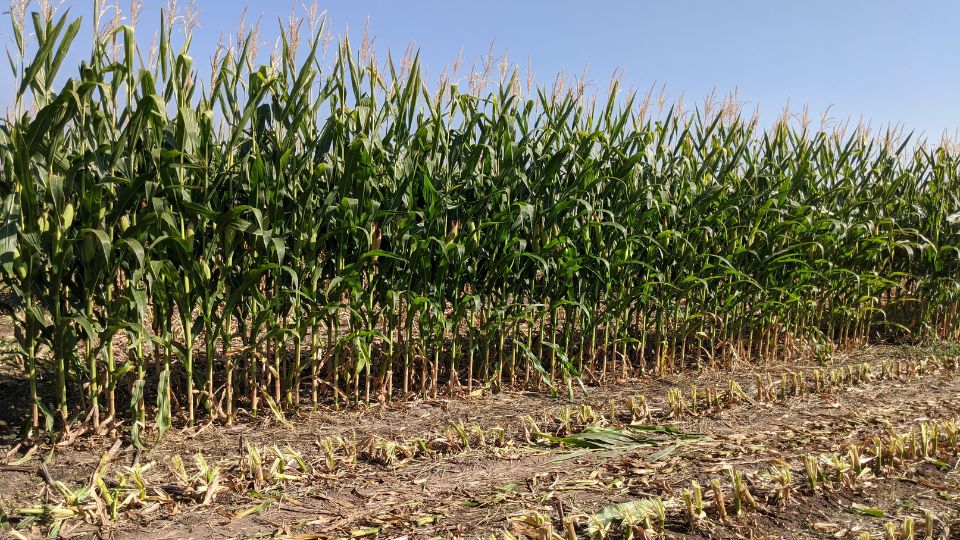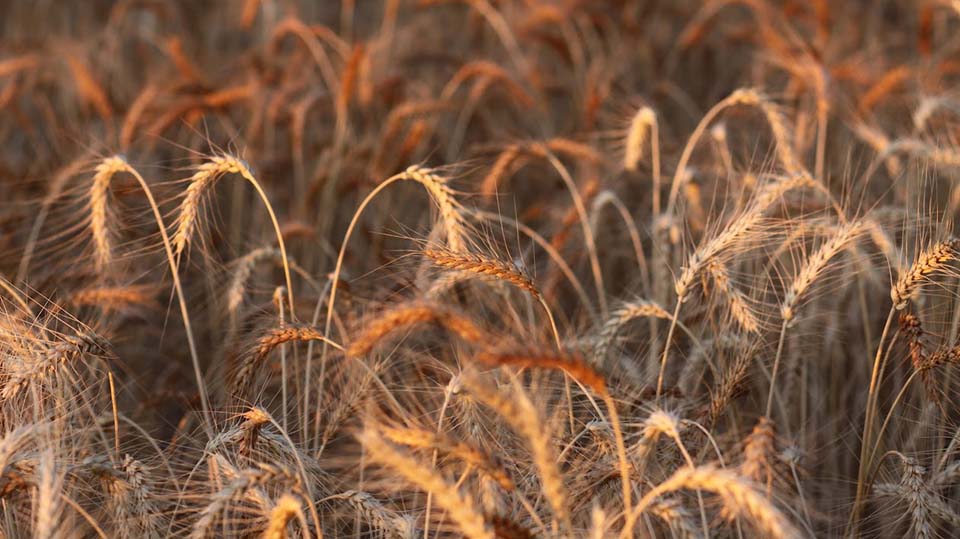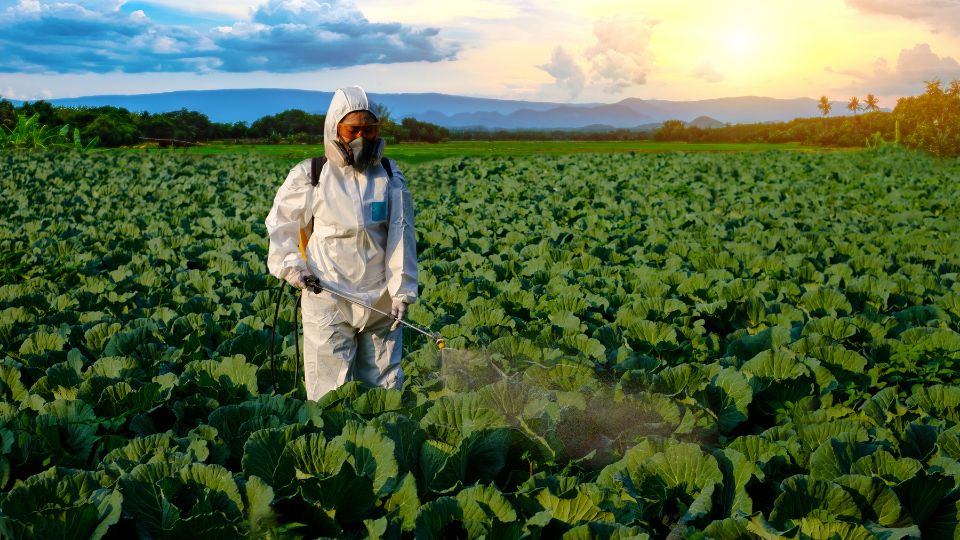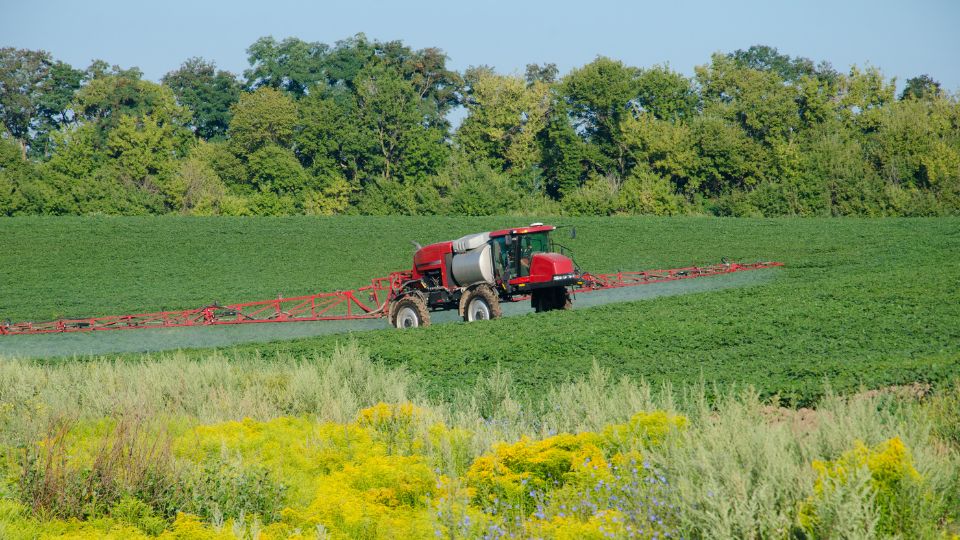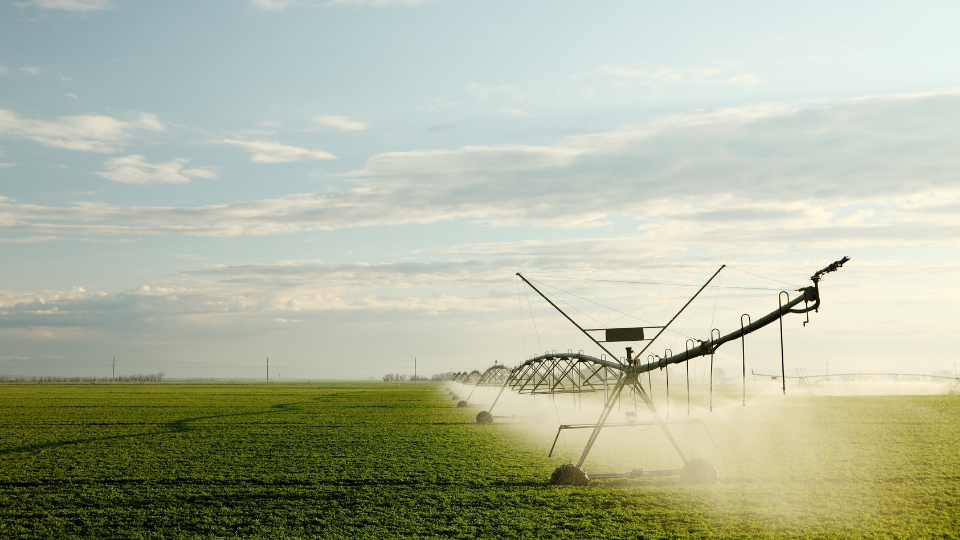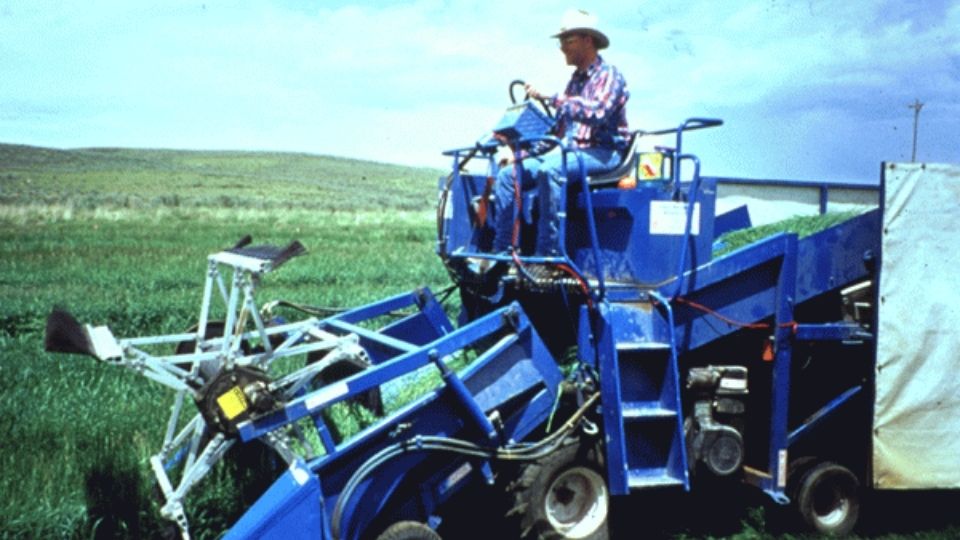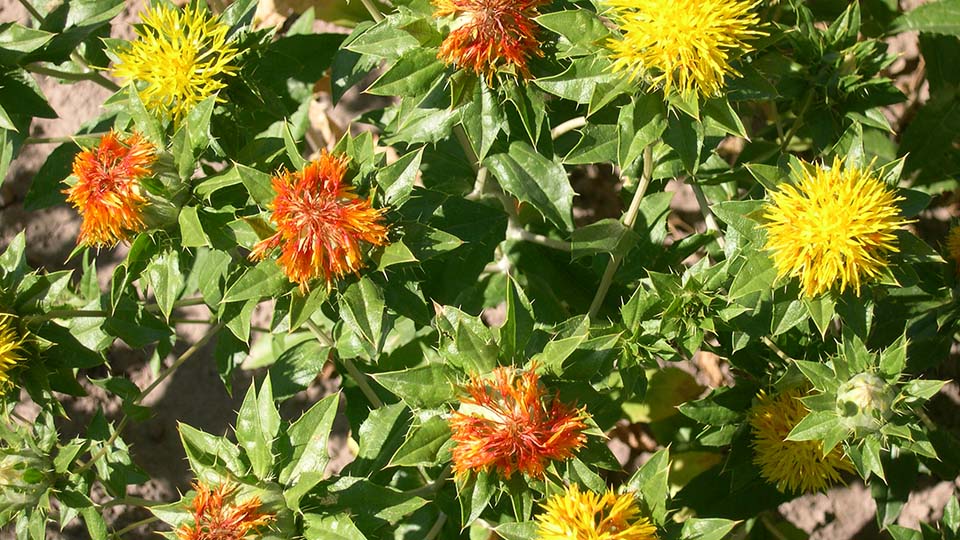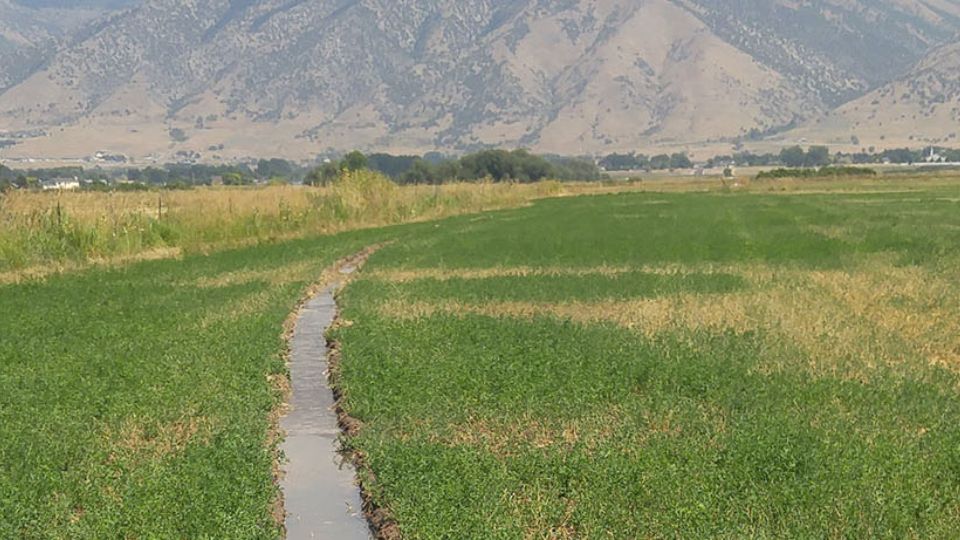Ten Reasons Why Alfalfa is Highly Suitable for the West
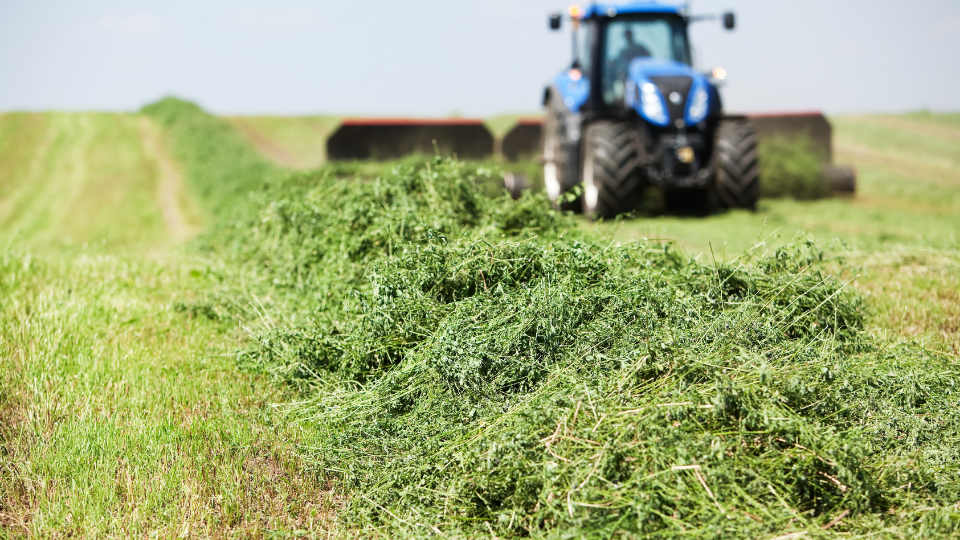
Alfalfa, globally considered the “Queen of forages,” is currently grown on about 6.8 million acres of cropland in the 11 Western United States (AZ, CA, CO, ID, MT, NM, NV, OR, UT, WY) each year (USDA-NASS, 2019). Nationally alfalfa is the third most important economic crop and its production in the West alone was worth 8.5 billion dollars in 2018. It is also a major feed source that supports milk production (13.7 billion dollars in 2018) and the several other livestock industries in the West.
Despite its importance to the Western economy, alfalfa can annually use more irrigation water than some other crops. This is an important concern given current and future water scarcity issues. These factors have led some to consider whether other crops besides alfalfa might help mitigate water shortages. Decisions about which crops to grow can be extremely complex. Removing large acres of alfalfa in this region could have devastating environmental (water quality and soil health decline) and economic impacts. As these decisions are explored, it is critical to weigh the many reasons why alfalfa is actually a quite suitable crop for the West. Below are 10 of the key reasons why alfalfa is suitable in western regions:
- High Water Use Efficiency – While it is true that more total irrigation water is applied to alfalfa than many other crops, alfalfa can actually have greater water use efficiency. Let us explain. Alfalfa has deeper roots (as deep as 15 feet in some places) and a longer growing season (most often March – October, but sometimes January – December in some southern areas of the West) than many other crops. Additionally, the entire aboveground portion of the plant is harvested multiple times per year. If you consider the water use efficiency of alfalfa as harvestable biomass / applied water, alfalfa actually has greater water use efficiency than many other crops (Putnam et al., 2001, Putnam, 2015).
- Irrigation Flexibility – As a perennial, naturally drought-tolerant crop, alfalfa has incredible flexibility in regards to irrigation management. In fact, irrigation can stop at almost any point in the season without causing long-term damage to the crop. Alfalfa goes dormant when it is water-stressed, but usually completely rebounds when irrigation continues (Lindenmeyer et al., 2011). This flexibility will be a critical aspect for potential water banking/leasing programs that are currently being explored in many Western States. It also reduces risks associated with drought and water delivery systems failures, because water delivery issues could decimate many annual crops with poor irrigation flexibility.
- Low Input – Unlike many annual and perennial crops, alfalfa requires few chemical inputs. Alfalfa is a legume and requires no nitrogen fertilizer, which is often one of the most expensive inputs for annual crops. Nitrogen contamination of water from increased corn acreage in the Midwest is a major concern that resulted in part from declining alfalfa production in that region. A portion of most nitrogen fertilizer applications also volatilizes into the atmosphere. In addition to less nitrogen, alfalfa also requires much less pesticides and tillage than most annual and even perennial crops.
- Resilient and Adaptable – Few crops are as resilient to difficult growing conditions as alfalfa. It can grow in almost any elevation – from the searing deserts 250 feet below sea level to nearly 10,000 ft. above, from sandy to clay soils. This is critical for the West where elevation changes are drastic and soils vary widely. Grain, fruit, nut, and vegetable crops are much more sensitive to weather conditions and often fail when early or late frosts occur. Alfalfa can also utilize rainfall better than many other annual crops. As a perennial crop, established alfalfa utilizes rainfall in the early spring long before most annual crops are even planted. In some years and some regions of the West, farmers can harvest their first crop of alfalfa (highest yielding) with little or no irrigation. Alfalfa can also be grown as a rainfed crop due to adaptability to limited water availability, albeit dryland generally reduces yield potential compared to irrigated conditions.
- Benefits Other Crops in Rotation – Alfalfa works with soil bacteria to convert nitrogen in the atmosphere to forms usable by plants. After alfalfa is terminated, large quantities of nitrogen can remain in the soil. This can usually result in savings of about $150/acre during the two crops that follow alfalfa from withholding or reducing nitrogen fertilizer applications (Yost et al., 2014b; Creech et al., 2015). In addition to nitrogen, crops that follow alfalfa in a crop rotation generally yield up to 10-15% greater and require less pesticides (Stanger and Lauer, 2008; Yost et al., 2014a). Alfalfa can also be grown with grasses in pastures providing nitrogen for the grasses, increased production during the hot summer months when cool- season grasses are less productive, and beneficially using soil water below pasture grass roots.
- Improves Soil, Water, and Air Quality – Perennial crops like alfalfa help reduce soil erosion, which is one of the primary causes of irreversible soil degradation. Alfalfa also can often improve some physical (aggregate stability) and biological (organic matter and potentially mineralizable nitrogen) properties of soil (Congreves et al., 2015). Most annual crops require multiple passes of annual tillage, especially in organic production. Tillage is a major contributor to soil erosion. Water and air contamination of excessive nitrogen is one of the largest environmental concerns in the United States. Various states in the Midwest are developing strategies to cut nitrogen losses from agriculture to water sources in half. Most strategies that involve changing fertilizer management only offer small improvements, whereas the addition of a perennial crop like alfalfa could nearly meet the nitrogen reduction goals (Iowa nutrient reduction strategy, 2012). Alfalfa is highly valued by organic and conventional farmers alike for its soil health- building characteristics.
- Pollinator and Insect Diversity – The health of bees and other pollinators are vital to the fruit and vegetable industries throughout the West. Alfalfa (mainly mature plants on field edges, ditches, seed alfalfa production, etc.) is one of the major sources of pollen. Other beneficial insects that keep pest insects in check are commonly found in alfalfa fields – and benefit the agro-ecosystems for neighboring crops. Often unseen by casual observers, hundreds of species of insects reside in alfalfa fields increasing landscape biodiversity.
- Wildlife Habitat – The water used in alfalfa creates lush oases of green for wildlife. Various wildlife species including birds, herbivores and important species such as foxes, hawks and eagles are abundant in alfalfa fields. Alfalfa can be used as mitigation for threatened species such as the Swainson’s hawk, which highly prefers alfalfa landscapes. In fact, 28% of California’s wildlife uses alfalfa for either reproduction, cover, or feeding (Putnam et al., 2001). While some creatures cause crop damage (e.g., gophers), the majority of the wildlife footprint causes minimal economic losses.
Alfalfa farmers and bird watchers alike highly value the wildlife commonly seen in their alfalfa fields. - Harvest Flexibility and Storage – The harvest window for alfalfa is much wider than many other crops. Although the quality of the crop will decrease as alfalfa matures, quality is often not overly critical unless alfalfa is being used for lactating dairy cows. This allows for high amounts of flexibility. Furthermore, the arid West also usually provides rain-free days between cutting and baling to produce excellent quality hay. Unlike some fruits and vegetables, alfalfa like grain crops that is properly dried and stored can maintain its quality for long periods of time. It does not need to enter the market or be consumed quickly. This allows farmers to stockpile feed for their livestock or store their products until markets and prices are favorable. These features also allow for it to be easily transported and exported.
- Low Risk and Local Food Production – While alfalfa is not the most profitable crop one could grow, it often competes well with grain and vegetable crops. Moreover, the risk of growing alfalfa is much lower than many other crops, making year-to-year profits more steady. Alfalfa is resilient to weather conditions and alfalfa markets have remained much more constant than some other crops. The West also has a long-lasting and large local and regional demand for livestock feed, which produces local food for consumers. For reasons noted above, alfalfa meets much of this need and is a more nutritious animal feed than many other crops.
Summary
Alfalfa is and has been grown by many farmers in the West for a variety of good reasons (including the ten discussed above). If it were not a suitable and profitable crop in this region, major reductions in acreage would have occurred long ago. Alfalfa has become such an integral and foundational aspect of Western agriculture that major disruptions in this industry could cause irreversible and long- lasting negative effects. One such industry would be the western dairy industry, which currently provides nearly 50% of the nation’s milk supply. Water scarcity and drought have also been a part of Western history, yet western farmers (most of whom have grown alfalfa) have weathered repeated droughts and remained profitable. As water scarcity increases in the future, more viable crop options other than alfalfa might become available, but the numerous benefits and flexibility of alfalfa should not be easily overlooked – especially considering that few if any crops can handle variable growing and irrigation conditions like alfalfa. Due to its many environmental and soil benefits, its resiliency, and many positive water characteristics, alfalfa is a critical component of sustainable agricultural systems for the future.
References
Congreves, K.A., A. Hayes, E.A. Verhallen, and L.L. Van Eerd. 2015. Long-term impact of tillage and crop rotation on soil health at four temperate agroecosystems. Soil Tillage Res. 152: 17–28.
Creech, E., G. Cardon, J. Barnhill, J. Gale, et al. 2015. The potential for reducing nitrogen fertilizer inputs for corn production in
the first year following alfalfa. Utah State Univ. Ext., Logan, UT. https://digitalcommons.usu.edu/extension_cural l/761/.
Lindenmayer, R.B., N.C. Hansen, J. Brummer, and J.G. Pritchett. 2011. Deficit irrigation of alfalfa for water-savings in the great plains and intermountain west: A review and analysis of the literature. Agronomy Journal 103: 45–50.
Iowa Nutrient Strategy Team. 2012. Executive Summary-Iowa Science Assessment of Nonpoint Source Practices to Reduce Nitrogen and Phosphorus Transport in the Mississippi River Basin. http://www.nutrientstrategy.iastate.edu/sites/def ault/files/documents/NRS2.pdf.
Putnam, D., M. Russelle, S. Orloff, J. Kuhn, et al. 2001. Alfalfa, wildlife, and the environment: The importance and benefits of alfalfa in the 21st Century. California Alfalfa and Forage Association, Novato, CA. http://agric.ucdavis.edu/files/242006.pdf.
Putnam, D. 2015. Why alfalfa is the best crop to have in a drought. University of California- Davis. Alfalfa and Forage News.https://ucanr.edu/blogs/blogcore/postdetail.cfm?postnum=17721.
Stanger, T.F., J.G. Lauer, and J.-P. Chavas. 2008. The Profitability and Risk of Long-Term Cropping Systems Featuring Different Rotations and Nitrogen Rates. Agronomy Journal 100: 105-113. https://www.agronomy.org/publications/aj/abst racts/100/1/105.
USDA-National Agricultural Statistics Service.2019. Quick Stats. United States Department of Agriculture. Washington, D.C. https://quickstats.nass.usda.gov/.
Yost, M.A., J.A. Coulter, and M.P. Russelle. 2014a. Managing the rotation for alfalfa to corn. Univ. of Minnesota Ext. St. Paul, MN. https://extension.umn.edu/corn-cropping- systems/managing-rotation-alfalfa-corn.
Yost, M.A., M.P. Russelle, and J.A. Coulter. 2014b.Field-specific fertilizer nitrogen requirements for first-year corn following alfalfa. Agronomy Journal 106: 645-658. https://dl.sciencesocieties.org/publications/aj/ab stracts/106/2/645?access=0&view=pdf
Revised February 2020 and published to the Web May 2022
Utah State University Extension
Peer-reviewed fact sheet
Authors
Matt Yost1, Niel Allen1, Earl Creech1, Dan Putnam2, Jody Gale1, and Glenn Shewmaker3
1Utah State University, 2University of California-Davis, 3University of Idaho
Related Research





